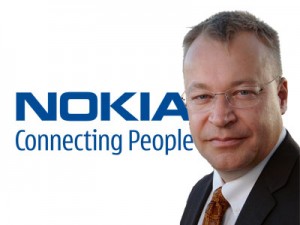What’s in an ecosystem?
Now a lot of people took offense to my post about MeeGo, with quite a few saying that I was a Microsoft shill, Windows Phone fanboy, hated open source, a goon, know nothing about Open Source and quite a few other things that by and large demonstrated that they completely missed the point.
Let me make this clear, as a standalone device, in terms of what I’ve seen of the User eXperience and the hardware, I’d be hard-pressed to find a compelling reason to avoid the N9.
I haven’t been more impressed by a Nokia since the N95 and certainly not as impressed by a Nokia-made user experience since I first laid eyes on Maemo but I’m concerned about putting my very skint supply of money on the line for a device that will not give me what I want.
Stephen Elop’s spiel on ecosystems goes a lot deeper than application stores, something that is quickly (and incorrectly) becoming the colloquial definition of an ecosystem. Let’s take a  quick look at mobile landscape now, Apple dominating the revenues and Google dominating the numbers, Nokia on their own trying to keep up with Google and simultaneously ceding revenue to Apple. As a for-profit company, that is bad, very bad, especially as margins continue to decrease. So why is it that Nokia can’t succeed where Google and Apple both have? It’s tied almost certainly to having unique selling points and a solid ecosystem. The significance of each is this, unique selling points draw customers to your devices and platform, a solid ecosystem and in some cases, vendor lock-in reduces churn (the constant moving of customers to and from your platform). Apple’s unique selling point when they first launched was the capacitive touchscreen and large (for the time screen) coupled with a user interface made for fingers and not styli. There was little else at the time and nearly everything else about the device was mediocre. They then started courting developers and getting people locked into their “ecosystem” storing, purchasing and managing their music both on device and on their PC’s using iTunes (which was the only way to get music etc on the device) and the lock-in was complete; for a time.
Seeing what Apple had done, all and sundry rushed to produce their own copy of the iPhone and while quite a few were more impressive hardware-wise none had unique selling points and none had a way to reduce churn. They all failed in one way or another. Apple subsequently added an application store, a great developer platform and added yet another unique selling point to their portfolio. Further, by using their own development environment, developers and consumers alike were even more locked in. No churn for Apple, just growth. Since then, the ball has just been gaining velocity as it sped downhill.
Google took a somewhat different approach, by claiming to be open and free to hardware manufacturers down on their luck, they managed to garner a boatload of support even though their initial offering was pitiful at best. They then built an ecosystem with component and SOC manufacturers where all Google would have to do is fix the looks and functionality in their little virtual machine environment and the SOC manufacturers would adapt it for the myriad of different chipsets that would be used by the myriad of Android manufacturers. This kept costs even lower for would-be  Android manufacturers and spurred even greater adoption of the platform. Coupled with better integration of burgeoning Google services and Google’s own proprietary (and very much ad-supported) developer offerings, they’d achieved more or less their own form of lock-in. As they continued to improve their user experience they fed growth while reducing churn.
NB: It should be noted that while Android source is free, access to mapping,mail, and market access is CERTAINLY not and must be licensed upon meeting certain fluid criteria laid out by the Android head honcho over at Google
RIM on the other hand had little to lock consumers in but BBM and a pitiful application platform while user experience literally rotted away. Sure they’ve had growth but relatively speaking, massive churn.
Symbian had frugality, price advantages and a relatively solid core but with little unique selling points outside of Nokia’s own hardware, it was left in a rather tough spot and we’re seeing the obvious effects of that churn.
One other aspect that I neglected to mention outright is the role of carriers in facilitating or hampering the growth and churn of specific software platforms. This is something I’ve covered in another editorial.
So let’s do a quick summary shall we. In order to be really successful in the current mobile landscape you need the following:-
1. A unique selling point either in terms of hardware or software running on a specific platform
2. A good user experience that is facilitated by:-
3. A good developer environment that allows extension of the devices capabilities
4. Support from component manufacturers for your software platform of choice
5. Support from mobile operators (I vomit a little in my mouth at the thought)
6. Rapid improvement and innovation of your platform of choice or other methods of enticing users to stay with your platform (BBM, Application stores, Google services all good examples of this)
Strangely enough, this seemingly unrelated points are the key pillars of a good mobile ecosystem. Hate it or love it, that’s the way the industry has been for the past 2-3 years. Sound familiar? From all we’ve seen in the past few years any one of these pillars being absent has/will result in abject failure. While I have my own thoughts on whether certain decisions were correct as things stand, I’ll judge in 12 month’s time
Category: Nokia






Connect
Connect with us on the following social media platforms.